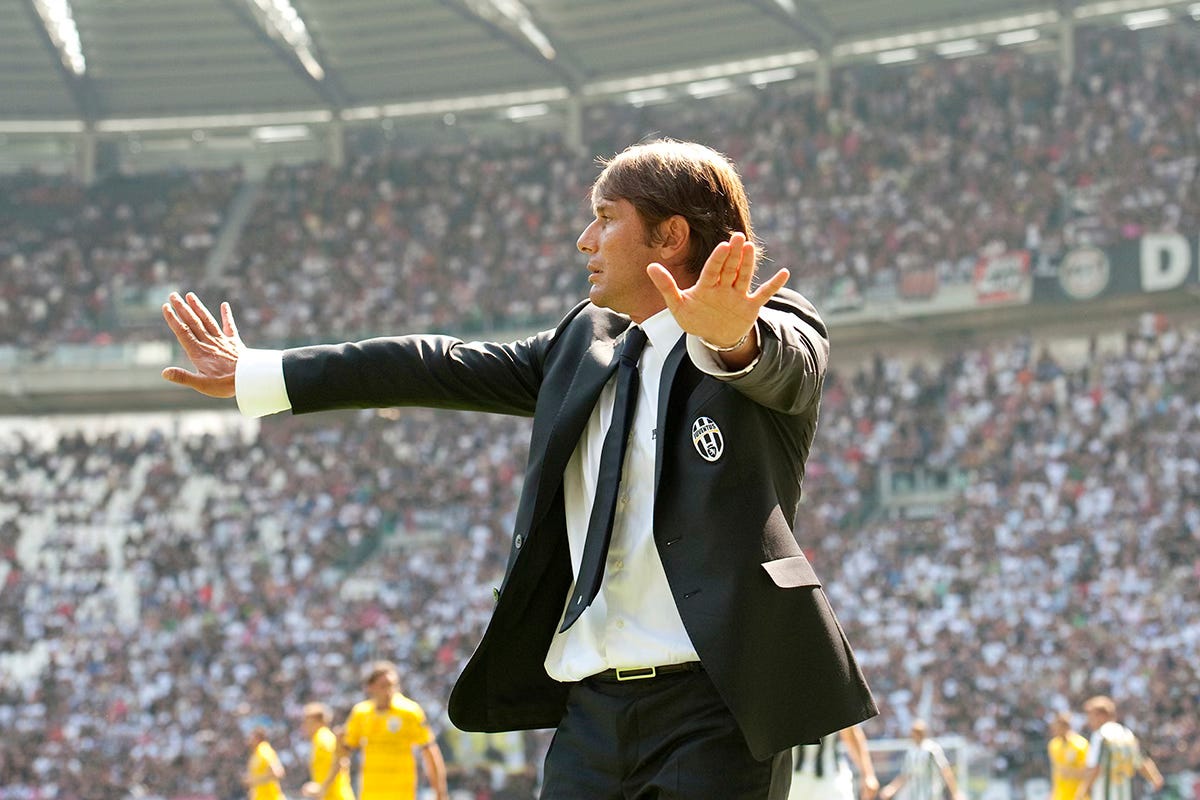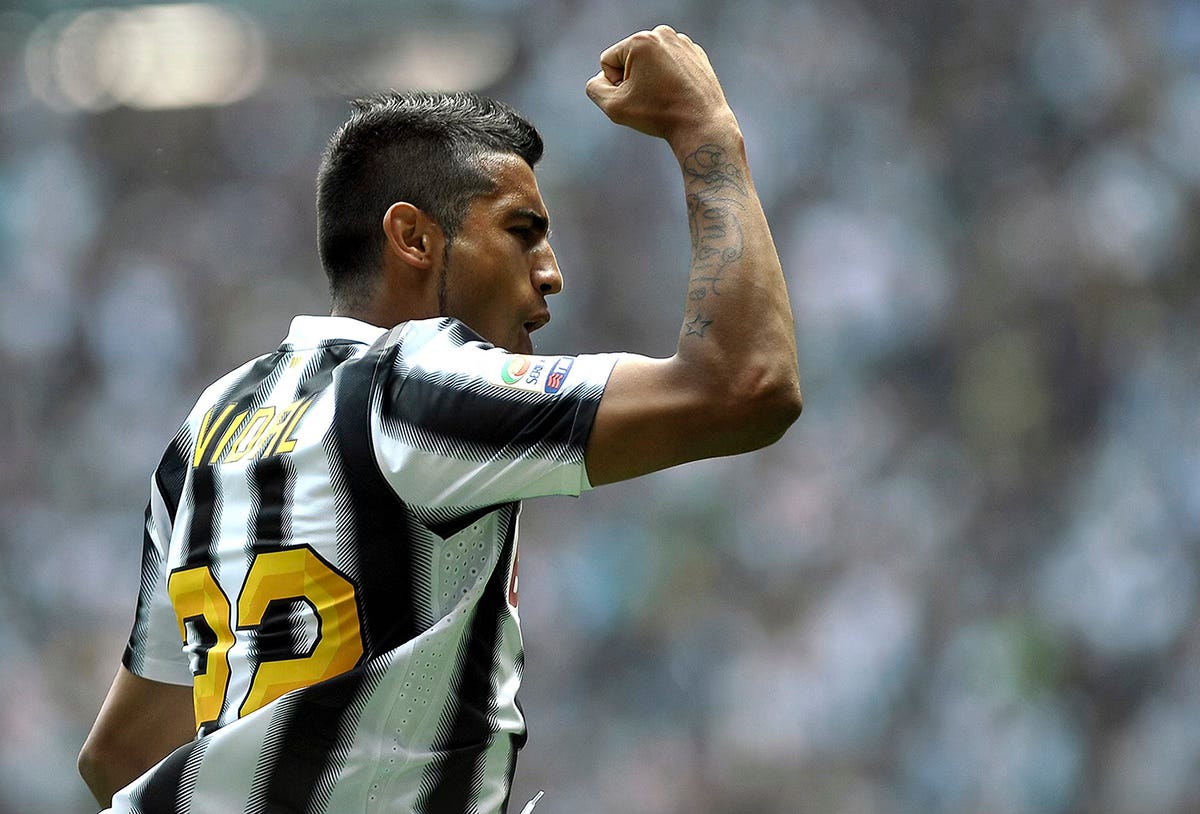It has been 13 years since Juventus faced Parma in the first season opener in our newly built home, yet the memory of that second half remains pinpointed in time, a moment when everything changed. We return to it now not simply to mark an anniversary, but because it belongs at the very beginning of The Juve Story’s first issue, which is dedicated to “Beginnings, Firsts, and Number Ones.” No episode fits that theme more completely. September 11, 2011 was the first real test at Juventus Stadium, the baptism by Conte, and the night Juventus rediscovered itself on the path to the ever-elusive Third Gold Star.
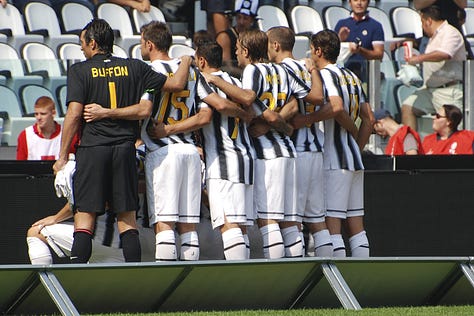
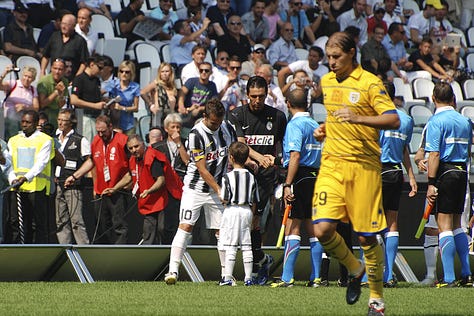
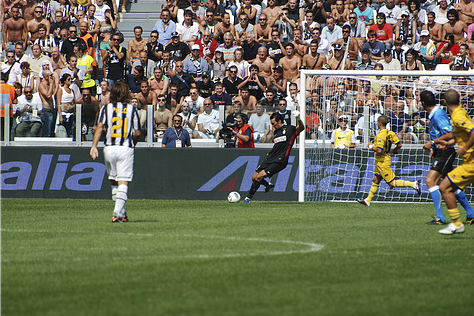
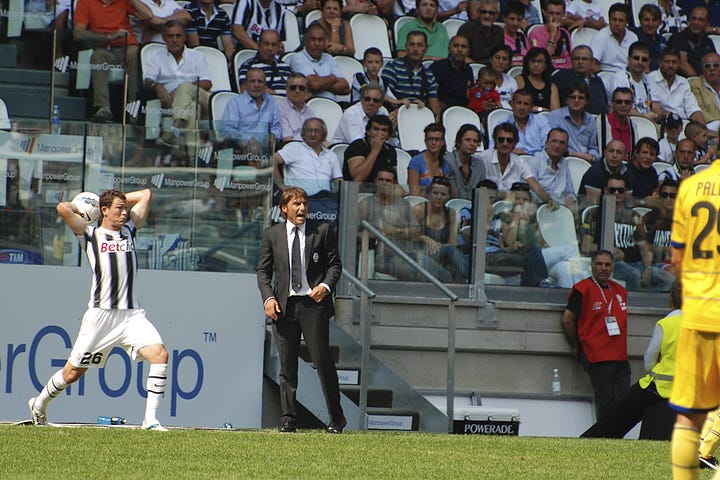
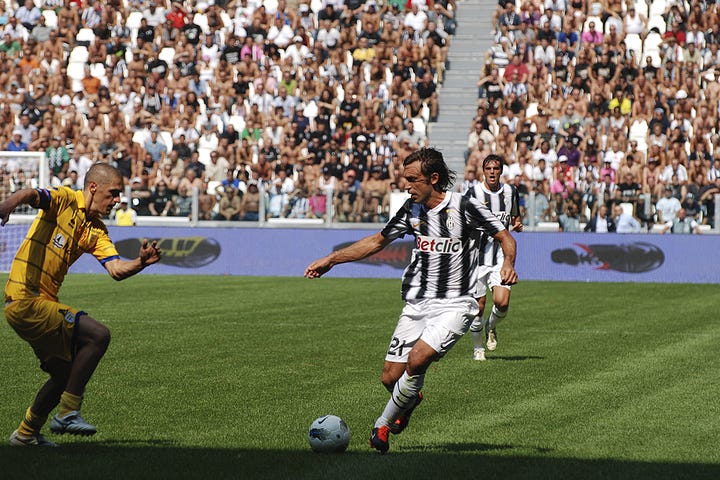
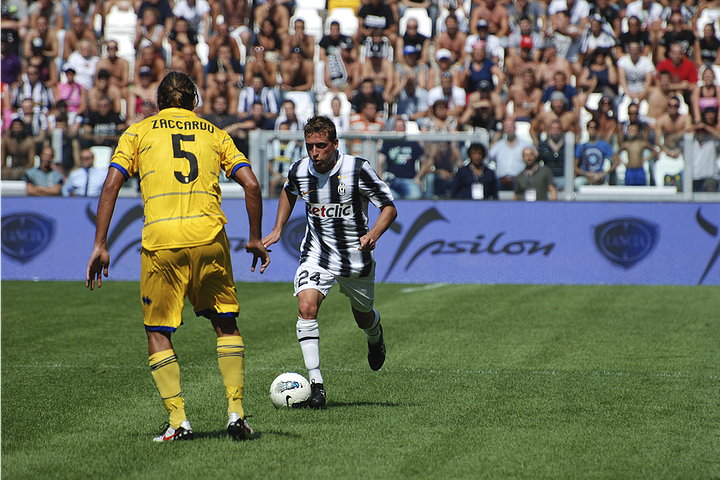
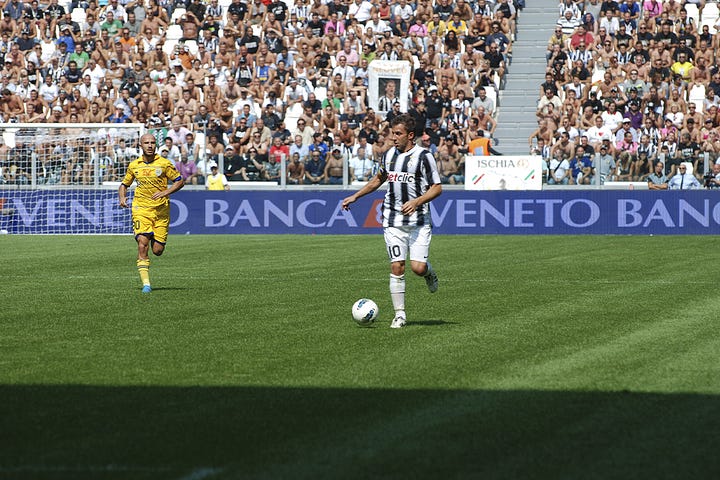
Andrea Agnelli, still early in his presidency, had already set the tone for what was to come. In an interview with us in May 2012, he reflected on the calculation that had been made when he accepted the job. The first year, he said, was not expected to bring much visible improvement. That was acceptable. What mattered was year two. If progress did not begin to reveal itself then, the club would be very worried indeed. His appointment was an act of clear leadership by John Elkann. In entrusting his cousin Andrea with the presidency, Elkann kept the club’s stewardship both personal and professional. That duality—football and family—runs deep in Juventus. It is not only the story of the Agnelli and Elkann dynasty, but also the story of countless supporters who inherit their devotion from fathers, mothers, and grandparents. It is the balance we’ve always expressed in The Juve Story’s tagline, “It’s football, it’s family.”
The summer of 2011 brought change on multiple fronts. Luigi Delneri was replaced by Antonio Conte, a choice that surprised many but would prove essential. Giuseppe Marotta, already establishing his reputation as a transfer mastermind, delivered players who would become foundational. Andrea Pirlo arrived on a free transfer, dismissed by some as past his prime but destined to orchestrate Juve’s rebirth. Emanuele Giaccherini, diminutive and unheralded, proved himself a powerful secret weapon. And then there were the veterans: Del Piero, Buffon, Bonucci, Chiellini, and Barzagli, figures who embodied continuity in an otherwise shifting landscape. This was not yet the fully formed Juventus dynasty, but it was more than just the scaffolding of one.
The stadium itself symbolized that ambition. Built on the ruins of the Delle Alpi, it was intimate where the old ground had been cavernous. There was no running track, no void between the supporters and the field. The stands rose steeply, designed to hold the sound and channel the pressure. For Italy, this was something new: the first modern, club-owned stadium designed in the style of the great Premier League arenas. It was a venue that seemed to declare Juventus’s intent not only to compete, but to set the standard.
Amongst the usual TV crews, two additional cameras were stationed behind the goals, ours. They were set to capture not only goals but the texture of the occasion: the shifting light as the sun dipped, the murmur of anticipation swelling into chants, the smell of grass cut close to the soil. For many supporters, it was the first glimpse of a stadium that truly felt like home. When Stephan Lichtsteiner scored in the 16th minute, the first competitive goal in the history of the stadium, something long dormant stirred. We would not have believed it if we had not seen it ourselves. Alessandro Del Piero and Andrea Pirlo were the first to leap on Lichtsteiner in celebration, bounding toward him like boys on a grade-school pitch. Pirlo, famously unshakable, allowed himself to grin and shout; even he could not hide the joy of the moment.
At halftime, the scoreboard showed Juventus 1, Parma 0. The supporters were satisfied with the promising start. But Antonio Conte was not. Claudio Marchisio later told us how Conte stomped into the dressing room and addressed each player in turn. According to Marchisio, the speech was stripped to its essence: just the player’s name, followed by the word “More.” Conte himself confirmed the moment in our own interview. The details differ only in emphasis, but both accounts reveal the same baptism by Conte: a refusal to tolerate contentment when domination was required.
The second half was the result of that baptism. Juventus returned to the pitch transformed. Simone Pepe doubled the lead and then sprinted toward our corner, stopping centimeters from where we stood behind the advertising boards. His scream was feral, rhythmic, four bursts in a row: “Yahhhhhh. Yahhhhhh. Yahhhhhh. Yahhhhhh.” It was less like a goal celebration and more like a German at Oktoberfest pounding the table with joy. Arturo Vidal added a third, Marchisio a fourth, and Parma’s resistance collapsed. Sebastian Giovinco’s late consolation for the visitors was a footnote. The real Juventus had emerged in those 45 minutes, fierce, physical, unapologetic.
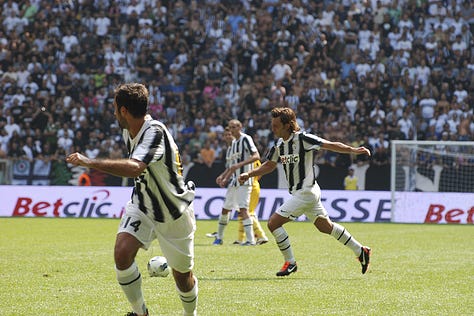
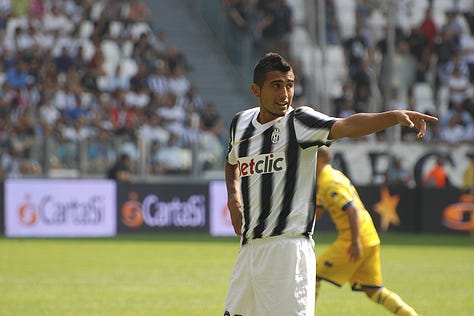
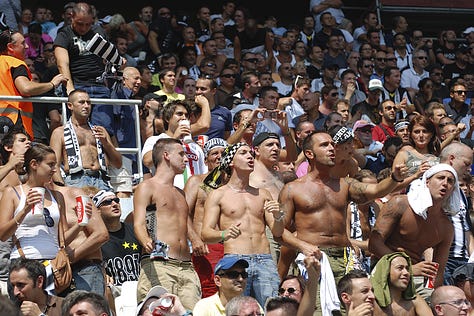
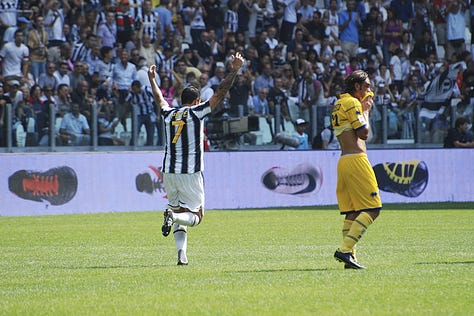

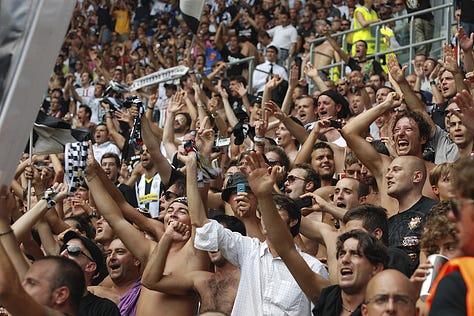
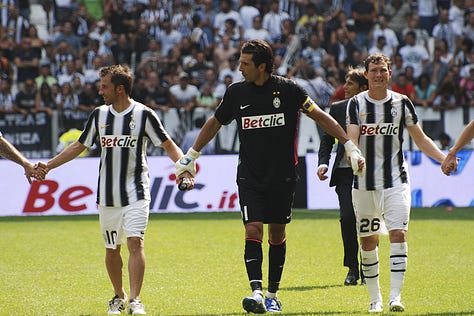
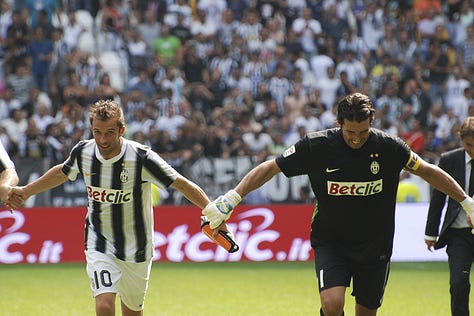
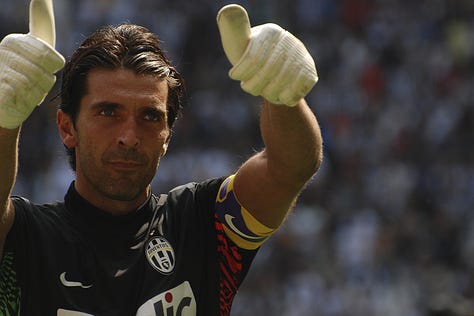
Behind the cameras, it was a scramble to keep pace. Goals arrived in waves, and the adrenaline of trying to track every angle matched the urgency on the field. Pirlo seemed to see every movement before it happened, directing traffic with a calm that belied the frenzy around him. Buffon commanded his defense with authority, Bonucci and Chiellini shut down every opening, Barzagli added steel. Del Piero, nearing the twilight of his career, played as if he were the bridge between past and future. In that moment, the balance of continuity and change could not have been clearer.
When the final whistle sounded, the scoreboard read 4–1. Supporters poured into the Turin night with the conviction that they had witnessed a rebirth. Conte’s Juventus was not merely going to win matches. It was going to overwhelm opponents. And for us, standing behind the goals as it unfolded, there was the eerie sensation of prophecy fulfilled. I remembered that meeting years earlier with Jean-Claude Blanc, when I had said Juventus had talent but was missing that necessary, signature horsepower. In the delirium of the second half, I caught myself thinking, “Wait—are they actually running Parma over right now? The real Juve’s back. This is exactly what we’ve been praying for.” And then, “I’m not dreaming this, am I?”
The match against Parma was not just the opening of a stadium.
It was the opening of an era.
Conte’s roar at halftime, Pepe’s scream into the cameras, Lichtsteiner’s goal embraced by Pirlo and Del Piero, Buffon’s command, Chiellini’s defiance, Pirlo’s artistry: these were not isolated events. They remain a timeless sequence that divided what Juventus had been from what Juventus would become. That second half stands as a fixed point in the club’s story, the moment when the demand for more—for effort, for hunger, for Juventus—ignited a run that carried the team to an undefeated Scudetto, nine consecutive league titles, and ultimately, the capture of the ever-elusive Third Gold Star.
On September 11, 2011, Juventus Stadium became more than concrete and steel. It became the place where Juventus was reborn, where family and football aligned once again, and where that second half still echoes, thirteen years later.


